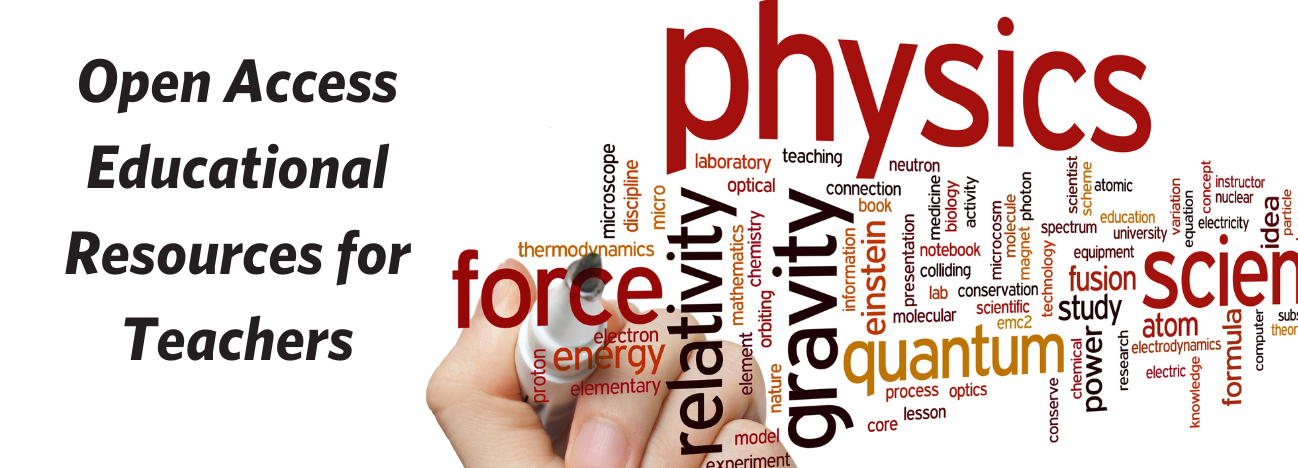Open Courses in the Department of Physics & Astronomy

Open Educational Resources
Open educational resources (OER) offer significant opportunities for customizing instruction and for making education more affordable. Many instructors create their own teaching materials, for example, by writing their own lecture notes and designing their own homework problem questions. Using exclusively OER course materials and making these available to the public with a creative commons license is the defining characteristic of an open course.
Why We Create and Use OER: A Little History
Stefan Reinsberg and Georg Rieger started this journey when the Department of Physics & Astronomy (PHAS) decided to offer a distance education section of Introductory Physics (PHYS 100). This is an algebra-based physics course that students take if they do not have Physics 12. The first distance education offering, early in 2013, used a commercial (paper) textbook, a commercial online homework platform, and custom modules derived from the classroom activities in the corresponding face-to-face sections that were posted on UBC’s Connect LMS (Blackboard). In addition, students needed to come to campus once a week to do the lab. We quickly decided that we needed a better integrated course and online labs with take-home experiments.
The solution came in form of the open textbook from openstax and the edge.edX platform. With the help of four graduate students, Reinsberg and Rieger were able to import and customize the textbook chapters into weekly reading assignments with embedded quizzes. They created weekly homework assignments based on the end-of-chapter problems in the open textbook and adopted the open course for face-to-face sections as well. Their rationale for doing all of this is fully explained in this short UBC Teaching & Learning Enhancement Fund article.
To assess the impact on students, they ran a survey and focus group interviews. The data revealed that in addition to saving costs, the customization of the reading made the textbook more relevant for students. As well, the data showed that OER can make a course more equitable, since not all students can afford to purchase course materials for all of their courses. More details about the survey can be found in this research article.
Things have evolved from there: with funds from the teaching and learning enhancement fund (TLEF) and the OER fund, Reinsberg and Rieger created customized videos and take-home (online) labs for the course. They integrated simulations from PhET directly into the readings and solution videos for difficult examples into the homework. Based on the successful template of Introductory Physics, Rieger led the transformation of two more courses into open courses using the same integrated format on edge.edX : calculus-based dynamics course (PHYS 117) and calculus-based introductory Electricity & Magnetism course (the PHAS course title is: PHYS 118: Electricity, Light and Radiation). These two courses follow a typical first-year physics curriculum reflected in many North American textbooks, including openstax.
Having the three open courses available during the covid-19 pandemic was invaluable as these courses could be reliably accessed from anywhere in the world.
Georg Rieger is currently working with Erfan Rezaie on the transformation of a fourth course into an open course, Energy and Waves (PHYS 131), which will impact about 1600 students per year.
About PHAS Open Education Courses
In summary, we currently have three large open courses in our undergraduate program: Introductory Physics (PHYS 100 - course + online labs), Dynamics and Waves (PHYS 117), and Electricity, Light and Radiation (PHYS 118).
The three courses share the same design features:
- All course materials are integrated on edge.edX
- Weekly structure with reading – lecture – tutorial – homework subsections.
- Customized chapters from the openstax physics textbook integrated with reading quizzes
- Lecture activities in form of concept questions and open response questions using randomized numbers
- Tutorial activities in form of concept questions and open response questions using randomized numbers
- Homework sets with concept questions and open response questions using randomized numbers
PHAS Open-Education Course Links
Below we share all three courses. They all have creative commons attribution (no commercial use). You may copy all materials that you find useful and modify them as you see fit. The links below take you directly into the course. You will need to register an account on edge.edX (note: not edX.org). If your institution runs open edX, you can import the entire course directly. For the course import files (in tar.gz format), please make a request to Georg Rieger at rieger@phas.ubc.ca.
- Physics 100 online project lab
- PHYS 100 (with electricity and circuits)
- PHYS 117
- PHYS 118
If you have any questions re: these resources, please contact Georg Rieger at rieger@phas.ubc.ca.
Open Course Resources
UBC OER Collection: Explore UBC Curated Open Educational Resources.
About the UBC OER Fund: The UBCV OER Fund aims to support affordable and inclusive access to learning materials through the adoption, adaptation, development, and integration of open educational resources in UBCV credit courses. See link for more information about 2023 OER Grants available to the UBC-V community.
BCcampus: Browse the BCcampus collection of Open Access Education Resources and their new B.C. Open Collection.
edX Support: UBC's guide on how to run edX edge.